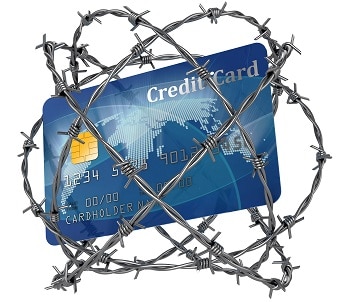Protecting your financial information and identity is a part of modern life. There are ways criminals can obtain your financial details without you ever even realizing you’re in danger. With so many over-the-air financial transactions happening all around us, thieves can “pick pocket” information without ever touching you, or even being seen.
Over the past few years, numerous ways criminals can get your information using technology have surfaced. A few you should be aware of:
Data Skimming: Data skimming is when a device is placed over a normal card scanning device – such as at a gas station’s “pay at the pump” location. The device is designed to look like nothing is out of the ordinary, but it is actually pilfering the information from card swipes. The most common places for such devices to be installed – and usually paired with a tiny camera to capture PIN numbers – are gas station pumps, outdoor ATMs, card-reading vending machines, or similar places with minimum (or virtually no) security.
Data Mining: Data mining is when your information is “mined” by spyware, malware, or other nefarious programs by cyber criminals. By designing hidden computer software that attacks either your computer or your local network, criminals can gain information when people shop online and input their card information. They can also attempt to lift large amounts of information from store computers or large wireless networks.
Near-Field Skimming: Near-field skimming is when a thief uses a device running an app designed to help debit card customers pay faster. Using the same technology as paying with a “tap” or “wave” of your card, (where you don’t enter a PIN number), criminals can lift your card information, including your number, expiration date, and name, just by walking near you. While running their application and a device such as a cell phone, thieves walk or stand near victims for a few moments, steal the information and walk on. Tests of near-field skimming ability showed that information could be lifted in as little as one second, even through wallets and clothing.
Tips to help protect your finances:
- Use more cash. Rather than swiping everywhere you go, stop at a secure ATM and take out cash before running errands or going out. The less swipes, the lower chance of fraud.
- Use a pre-paid card. If you know you’re going to go out on a big shopping trip – or you do any online shopping, get and load a pre-paid card. Many today come with very similar – if not the same – protection afforded by credit (and many) debit cards, but you control how much money is on it. Then, in the case it is ever lost or stolen, not only is it not your main card and information, it also greatly reduces loss and impact on your overall finances.
- Be more cautious.
- Take a good look at any swiping devices before swiping your card to make a purchase – especially ones that could have been tampered with. (Highly unlikely at indoor and frequented locations, but possible at unattended and outdoor locations.) If anything looks suspicious, don’t use the machine.
- Keep your card as “put away” as you can. Try not to have your card in a location in your purse, wallet or pocket where there is little protection for it. Although stealing card information even through clothing was proved, it does make it harder and less likely to work if the card is under multiple layers of various material.
- Have identity theft protection. Most card companies will cover some losses if your information is stolen, but often only up to a certain amount – and investigations into larger losses can take a long time, with no guarantees your money will be recovered. Some home owner’s insurance policies come with some level of identity theft protection as well. But to really be covered in the case of a large loss of your financial information, identity, and money – it’s advised to have id theft insurance. Good identity insurance will quickly replace money lost, help you reestablish credit, deal with the banks and card companies, and get you back on secure financial footing.



